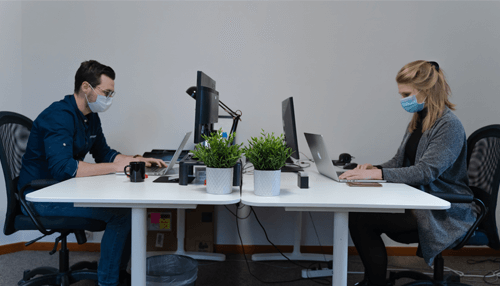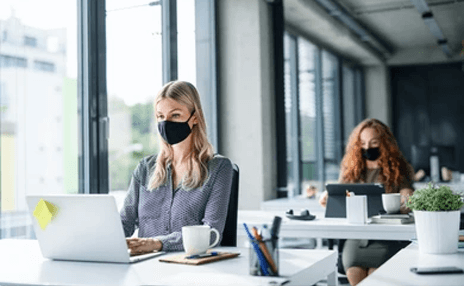It is difficult to find any positives or bright sides when it comes to the Coronavirus pandemic. It is much easier to focus on the carnage, the horrendous loss of life in almost every country across the globe, the closure of businesses, and our communal anxiety. Even so, as with all natural or man-made disasters, our world always comes out the other end a little healthier and a little better. The reason for this is that, on a whole, we learn from our mistakes, even if it does not immediately appear that way.
The way offices and workplaces in general – in fact, the world in general – operates and goes about doing their normal daily functions has changed significantly in the wake of and as a result of the pandemic. Things that we did beforehand with little or no thought are no longer done or are planned out meticulously, and the way that we socialize and communicate with our colleagues and clients is completely different.
In this post, we look at some of the things that have changed in offices and workplaces around the world after the pandemic.
The office space itself
While one would have hoped that offices were clean and hygienic anyway, it has never been so important. Offices now need to be kept clean and disinfected indefinitely, not just for COVID-19 protection, but for all future pathogens and viruses that almost undoubtedly will rear their ugly heads. We learned how all pathogens spread by studying how COVID-19 is transmitted. Employees, for example, will be more aware of how the flu spreads during the next flu season and hopefully take measures to mitigate the risk.
Offices have also had to look at increasing their ventilation. Prior to the virus, office buildings were known to be stuffy rooms, often with little to no fresh air flowing through. Now, adequate ventilation is a must. This is because it allows pathogens to be filtered out of the room. One of the best ways to improve ventilation is by having open windows. Of course, this often brings issues of its own with regards to things like security. You could look at how home offices manage this – one solution is to use shutters from shuttercraft.co.uk.
The flexibility we allow for our employees
At the peak of the virus in April and May 2020, the general order was to work from home where it was possible, and even now, as we begin to take steps towards normality, it is still recommended. The benefit of this was that it showed many managers and business owners that employees can work from home and can work well if given a degree of flexibility.
This was great news especially for parents and those with additional caring responsibilities outside of the workplace. If they know they are trusted enough to get the work done, regardless of where they work and the times that they work, they will feel valued. A valued employee will work harder and be more loyal – and that can only be good news for businesses.
How employees communicate with one another
A long time before the virus hit our shores, it was common knowledge that businesses had to do better when it came to communication. After all, if no one knows what anyone else is doing, and news and information are kept as secret as the crown jewels, how can a business function properly?
Transparency is now vital. From making offices more open plan and doing away with shut door policies, most business owners and managers have stepped up to improve the way employees work with one another and how team members collaborate and communicate.
For those who work from home, new technologies have been implemented and brought in, from Zoom and Microsoft Teams calls to workflow management tools such as Trello and Asana, and work devices set up with cloud services, there is now no excuse to be poor at communicating with other members of the team, wherever in the world they may be based.
The health and wellbeing of office workers
The workplace culture of the west was heavily weighted towards ‘work as long and as much as possible’ – you would be seen as slacking off if you were not at your desk before your start time and working late. You were seen as not being a team player if you did not sit at your desk, working through lunch, only stopping to quickly chow down a soggy sandwich and a lukewarm vending machine coffee.
Not only was this damaging to the health and wellbeing of employees, but it is also going to be counter-productive when it comes to making sure that everyone is working efficiently. An exhausted, overworked and unwell employee is not going to be performing at their best.
Fortunately, the pandemic has helped people to realize that there is so much more to life than work, and that actually, our own health and wellbeing, both physical and mental, is incredibly important. The flexibility that we mentioned in a previous point will go a long way towards helping with this, but there are other things that can be done, such as making sure that the company is friendly and understanding, even when it comes to mental health issues.
Final thoughts about offices after the pandemic
The way our office function, from the day to day operations, the layout of the desks and furniture, the way we communicate with one another, our social relationships and our health and wellbeing at work has all changed massively in the wake of the pandemic, and these are steps that are generally very positive. As we move out of the pandemic and back to normal, these things will hopefully remain in place in the office, and make our work lives much healthier and enjoyable and more productive.
How has your workplace or office changed since the onset of the Coronavirus outbreak?



